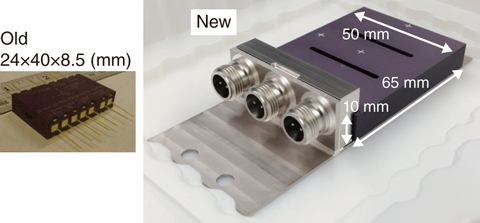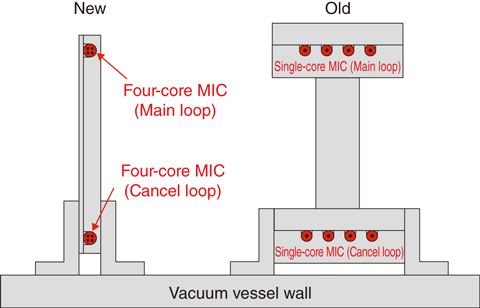
Fig.9-7 Comparison between new and old magnetic-coil sensors

Fig.9-8 Comparison between new and old Rogowski-coil sensors

Fig.9-9 Comparison between the cross-sections of new and old diamagnetic-coil sensors
Fusion plasmas are confined within a magnetic field. Measurement of the magnetic field enables us to know various important characteristics of the plasmas because the field is induced by not only magnetic coils but also the current flowing in these plasmas. Therefore, magnetic sensors are the most important measuring equipment for fusion plasmas. Magnetic sensors are made with coil windings and measure the magnetic field inside these coils. They have to be made with metals and non-organic materials so as not to exhaust the gas in ultra-high vacuum because they are installed in the vicinity of the plasma within the vacuum vessel surrounding it.
The shape and position of the plasma are measured with a magnetic sensor. Instabilities are also identified. For this purpose, we developed a magnetic-probe type of sensor, which combines a coil for position/shape control and two types of coils for measurement of instabilities (Fig.9-7). It has a large sensitivity for its size because it comprises ceramic plates metalized with dense tungsten circuits. Moreover, enlargement of the coil leads to its sensitivity being ten times higher than that of a previous one. A mineral-insulated cable (MIC), which consists of a conductor insulated with a ceramic powder inside a stainless sleeve, is employed as the signal wire of the sensor. We developed a new connector for connection between the MIC and the sensor in order to allow the sensor to be easily changed in the event of a fault.
Plasma current is measured with a Rogowski type of sensor, which consists of a helical cable centered around a return conductor. We developed a new type of non-MIC-based Rogowski coil; whereas the previous coil consisted of a ø = 0.5-mm MIC winding with a diameter of 5 mm and a length of approximately 9 m (Fig.9-8). New one consists bare-wire-based helical winding with same diameter insulated with ceramic powder. It is brake-proof due to the thickness of the ø = 0.2-mm wire, whereas that of MIC is ø = 0.1 mm, and can measure the fast transition of the current. We successfully made coils with lengths 16 m.
Moreover, we can measure the plasma’s stored energy with a diamagnetic-loop type of sensor, which comprises a pair of loops surrounding the plasma. This is the most important value for knowing the performance of the fusion plasma. We developed new type of diamagnetic loop consisting of only one turn of a four-core MIC for each loop, whereas previous types of coils consist of four and three turns single-core MICs. A diamagnetic loop has to be installed with absolute accuracy because it has to measure the magnetic field with to a precision on the order of ten-thousandths of signal amplitude. However, such a very simple structure (Fig.9-9) enables it to be installed with high accuracy.